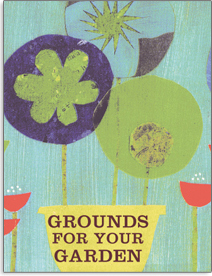Between being sick and working on a casting for a National Aids Fund video project, I have hardly had time to post.
Earth Day at Lindsay’s school went really well. I left Edie home because she was acting very sick that day. (Fortunately having a day to herself without her sisters seemed to do the trick and she’s all better) There were all kinds of interesting people and kid’s projects there. The Brooklyn Botanic Gardens was there talking about vermicomposting, someone was talking about green roofs, there were earth boxes and the kids were able to make sculptures out of egg cartons and water bottles.
The hens were a big hit. I brought photos of my garden to “prove” to people that we have incorporated the chickens into our lifestyle rather than the other way around. I also brought a bag of ivy leaves that the kids could feed to the hens. That was a big hit. I love this photo because it looks as though Lulu is trying desperately to communicate to me that she wants to go home.
It was threatening to rain all day and at one point a dark cloud passed overhead and it started to sprinkle. And true to form (see my rant about new yorkers vs. nature here), someone claimed they saw lightning (there wasn’t any) and a general panic set in while all the kids were herded inside. Nothing like everyone running away from the first sign of a natural occurrence as a way to celebrate Earth Day. Sigh. But I think besides that utter silliness, it was a great event.


